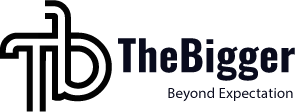When launching a new project, every decision comes with a price tag. From hiring to logistics to machinery, the line between scaling up and going broke is razor-thin. That’s why more businesses, from construction crews to independent contractors, are turning to smart, scalable options like Equipment Outfitters. They don’t just supply tools; they offer flexible purchasing options that can quietly revolutionize your cash flow, and your strategy.
On-demand equipment financing is no longer just a convenient choice; it’s fast becoming a critical component of modern business planning. Whether you’re building homes, maintaining municipal infrastructure, or just trying to keep your farm running during harvest season, how you acquire your tools can affect more than just your bottom line. It can shape how fast you grow, how well you compete, and how resilient you are in an unpredictable economy.
The True Cost of Ownership
Let’s start with the obvious: buying heavy-duty equipment outright is expensive. We’re not talking about a few power drills—we’re talking $3,000 chippers, $10,000 lifts, or custom welding stations that run well into five figures. Even for well-capitalized businesses, tying up that much money in hardware can be risky.
Ownership means full responsibility. Maintenance, repairs, storage, insurance—all fall squarely on your shoulders. And the kicker? Most equipment sits idle more than it’s used. That’s a major sunk cost. Financing, on the other hand, gives you access without the weight of immediate depreciation.
Cash Flow is King
Every small business owner knows the pain of watching a major purchase drain their working capital. That’s where equipment financing starts to shine. By spreading the cost over manageable payments, companies can preserve their liquidity. That means payroll gets covered, inventory stays stocked, and you’re able to pounce on opportunities instead of postponing them.
For businesses with seasonal demand—think landscaping, farming, or even local festivals—this model offers the agility needed to stay lean during off-months and scale fast when work picks up.
Financing as a Strategic Tool
On-demand financing isn’t just about managing costs—it’s about unlocking new possibilities. Want to take on a bigger project? Bid more competitively? Expand into new regions? Access to premium tools without a massive upfront cost can make the difference between getting the contract and staying on the sidelines.
It also lets you adopt the latest technology faster. The pace of innovation in construction, automotive service, and material handling means that the best equipment today might be outdated tomorrow. Financing gives you a way to upgrade regularly without feeling financially trapped.
An Unexpected Ally in Tax Season
One under-discussed perk of financing equipment? Tax benefits. Under IRS Section 179, businesses may deduct the full purchase price of financed equipment in the year it’s put into service, rather than depreciating it over several years. This creates an immediate incentive to invest without draining your reserves.
The IRS even allows bonus depreciation on certain equipment purchases, offering another layer of savings. (Always consult a tax professional before planning your strategy, of course.)
To explore this topic in greater depth, you can review guidance from the Internal Revenue Service, which outlines depreciation rules and Section 179 benefits for business equipment.
Mitigating Risk During Economic Volatility
In times of economic uncertainty, flexibility is everything. Buying equipment outright locks you into an asset-heavy position. But financing gives you options. If a project gets delayed or canceled, or if your industry takes an unexpected downturn, you’re not stuck with idle tools that eat into your balance sheet.
Flexible terms—like short leases, low-interest payments, or seasonal structures—also provide a buffer. Some plans even offer equipment swap-outs or upgrades mid-cycle, helping you stay efficient even when markets aren’t.
Thinking Beyond the Construction Site
This isn’t just for people in hard hats. Equipment financing is also a powerful lever for automotive garages, metalworking shops, warehouses, and more. Think tire changers, lifts, air compressors, wood planers, or even portable power systems.
Need a new hoist for the back of your service truck? Financing makes it possible. Want to expand your garage with a third hydraulic lift? Payments spread over time make it sustainable.
With providers like Equipment Outfitters, you’re not just accessing tools—you’re accessing infrastructure. The kind of infrastructure that empowers you to deliver faster, safer, and smarter service.
Flexibility Fuels Growth
The core advantage of on-demand financing is that it matches your pace. You’re not paying for what you might need someday; you’re scaling in real time. That creates opportunities not just for saving money, but for making more of it.
With flexible options, you can:
- Enter new markets faster
- Win bigger contracts by proving readiness
- Take on emergency jobs without delay
- Improve efficiency with newer, faster tools
And most importantly? You keep your options open. That kind of agility used to be a luxury. Now it’s essential.
The Intangible Edge
Beyond the spreadsheets and tax forms, financing gives you something intangible: confidence. Knowing you have access to the right equipment, when and where you need it, lets you say yes to opportunities others might pass up. It eliminates hesitation. It makes your operation look bigger, more reliable, more prepared.
It shows your clients that you’re serious. That you’re ready to work, ready to solve, and ready to scale.
In an era where adaptability trumps tradition, on-demand equipment financing is more than a line item—it’s a business philosophy. It’s about shifting from static ownership to dynamic capability. It’s about aligning your tools with your timeline, not the other way around.
So whether you’re laying pavement, erecting scaffolding, or simply upgrading your shop setup, consider not just what you need—but how you get it. Because in today’s fast-paced world, the way you finance your tools might just be the sharpest tool in your shed.

